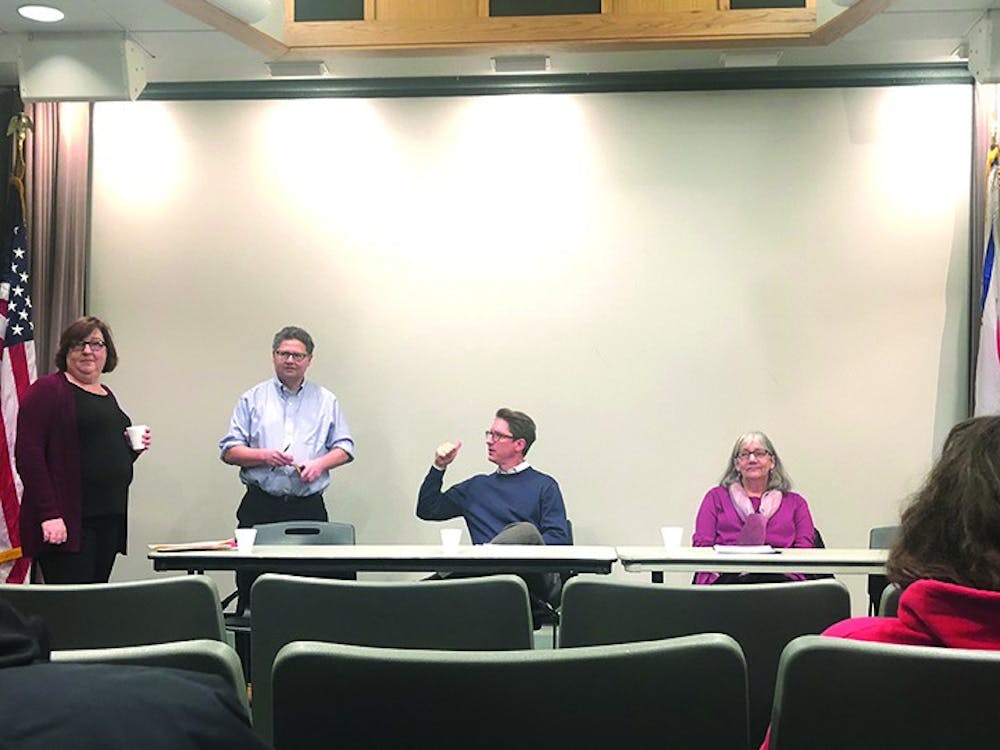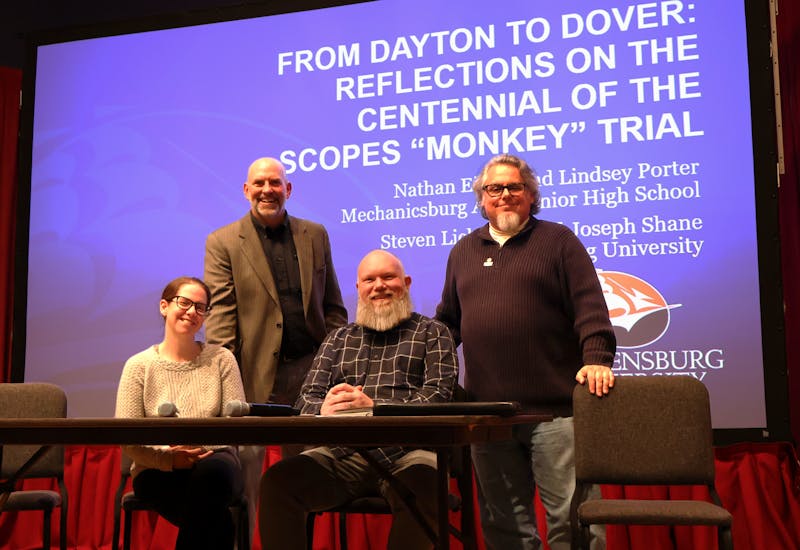Local history experts met in Orndorff Theatre Wednesday night to tell attendees of the influence that Native Americans have had on the United States.
According to Dickinson College’s Christopher Bilodeau, Shippensburg and its surrounding areas have been connected with Native American peoples for thousands of years.
Throughout Pennsylvania’s history, a wide variety of tribes have called the state their home, including the Iroquois, Susquehannock and the Tuscarora.
However, efforts to assimilate Native American people into an ever-changing society has resulted in the erasure of their culturally-rich history.
The need to assimilate led to the creation of the Carlisle Indian Industrial School in 1879. The institution’s founder, Richard Henry Pratt, chose to build the boarding school in Carlisle, just a 30-minute drive away from Shippensburg, due to the lack of other Native American influence in the area at the time of its creation.
Its students not only learned information that would help them better assimilate into society, but practical skills that could be applied throughout their daily lives.
The school itself strictly followed the societal gender norms of the time, especially while creating their curriculum. Women learned crucial household abilities like cooking and sewing, while men were taught a more physical-based set of skills like carpentry.
“This prepared females to be domestics,” said Barbara Landis of the Cumberland County Historical Society.
Students were being trained to fill specific roles — one that would either financially support the family or one that would nurture and take care of the family.
Out of the nearly 8,800 students who attended the Carlisle Indian Industrial School — until it was closed in 1918 — only 758 students graduated.
As reported in her student record, Julia Bent of the Cheyenne Nation did not attend the school on a continual basis. Despite this, she was able to graduate nearly 10 years after her arrival in 1890.
Following her time spent at the Carlisle Indian School, Bent attended the Cumberland Valley State Normal School in both 1892 and 1893, which later became Shippensburg University.
“You can see a lot of interesting records in these files,” said SU history/philosophy professor John Bloom.
Bloom spoke of one of the most popular ways that students were able to unwind outside of the classroom — sports.
“Sports provided an anchor of pride,” he said.
Olympian Jim Thorpe attended and gained worldwide fame during his time at the school. Today, Thorpe is one of the most well-known attendees of the school. His resting place resides in Pennsylvania in a small town that bears his name.
Students who participated in sports not only provided other school attendees with a sense of pride, but also showed outsiders that they were more than capable of behaving in a respectable manner.
The school’s athletes used their time in the spotlight to dismantle harmful stereotypes against the Native American people, slowly breaking down the societal barrier over time, Bloom said.





The Slate welcomes thoughtful discussion on all of our stories, but please keep comments civil and on-topic. Read our full guidelines here.